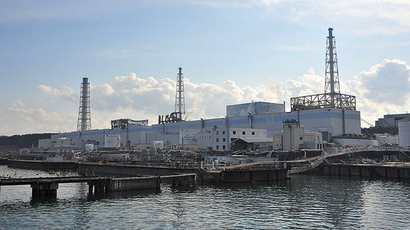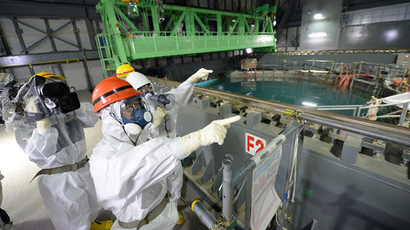TEPCO accepts US offer to aid dangerous Fukushima cleanup

Tokyo Electric Power Company (TEPCO) has accepted Washington’s offer to help with the cleanup and decommissioning of Japan’s Fukushima Daiichi nuclear plant. The move comes as TEPCO prepares for the major operation of removing fuel rods from Unit 4.
TEPCO president Naomi Hirose said the decision was made Friday
when US Energy Secretary Ernest Moniz visited the nuclear plant.
“Secretary Moniz and I became consistent through our talking
today with the necessity of further strengthening cooperation, to
contribute to the nuclear power and decommissioning industry not
only between the two countries but throughout the world, by
sharing and accumulating technology and knowledge towards the
stability and decommissioning of the power station,” Hirose
said in a statement published on TEPCO’s website.
In 2012, Japan and the US created a bilateral commission to
strengthen engagement on civil nuclear issues.
A Japan-US commission is set to meet in Washington, DC on Monday
to exchange opinions on Fukushima emergency response and
regulatory issues.
TEPCO’s president said he has “high hopes” that Japan will
“benefit from US to experience and expertise at Fukushima
Daiichi."
"We will work together to tackle many challenges toward
decommissioning," Hirose said in an interview with Japanese
public broadcaster NHK.
On Friday, US Energy Secretary Moniz visited the crippled
Fukushima plant to inspect preparations to remove fuel rods from
a storage pool at Unit 4.
Escorted by Hirose, the US official also visited other facilities
at the plant, including storage tanks for contaminated water and
radioactive water treatment units.
"It appears that spent nuclear fuel will begin to be removed from
Unit 4 as scheduled in mid-November," said Moniz, the highest
ranking US official to visit Fukushima since a March 2011
earthquake and tsunami caused a series of nuclear meltdowns at
the plant.
The fuel removal at Unit 4 is said to be the toughest and most
dangerous operation for TEPCO; one wrong move could result in horrific quantities of radiation
being released into the atmosphere or cause an explosion many
times worse than the original disaster.
Reactor 4 contains 10 times more Cesium-137 than Chernobyl did.
Scientists have warned that another nuclear disaster could be the
beginning of an ultimate catastrophe for the planet. The
mid-November fuel removal operation will be just the first step
in a decommissioning process that is expected to take decades.
Moniz has stated that the cleanup operation “has global
significance” and that “we all have a direct interest in
seeing that the next steps are taken well, efficiently and
safely.”














